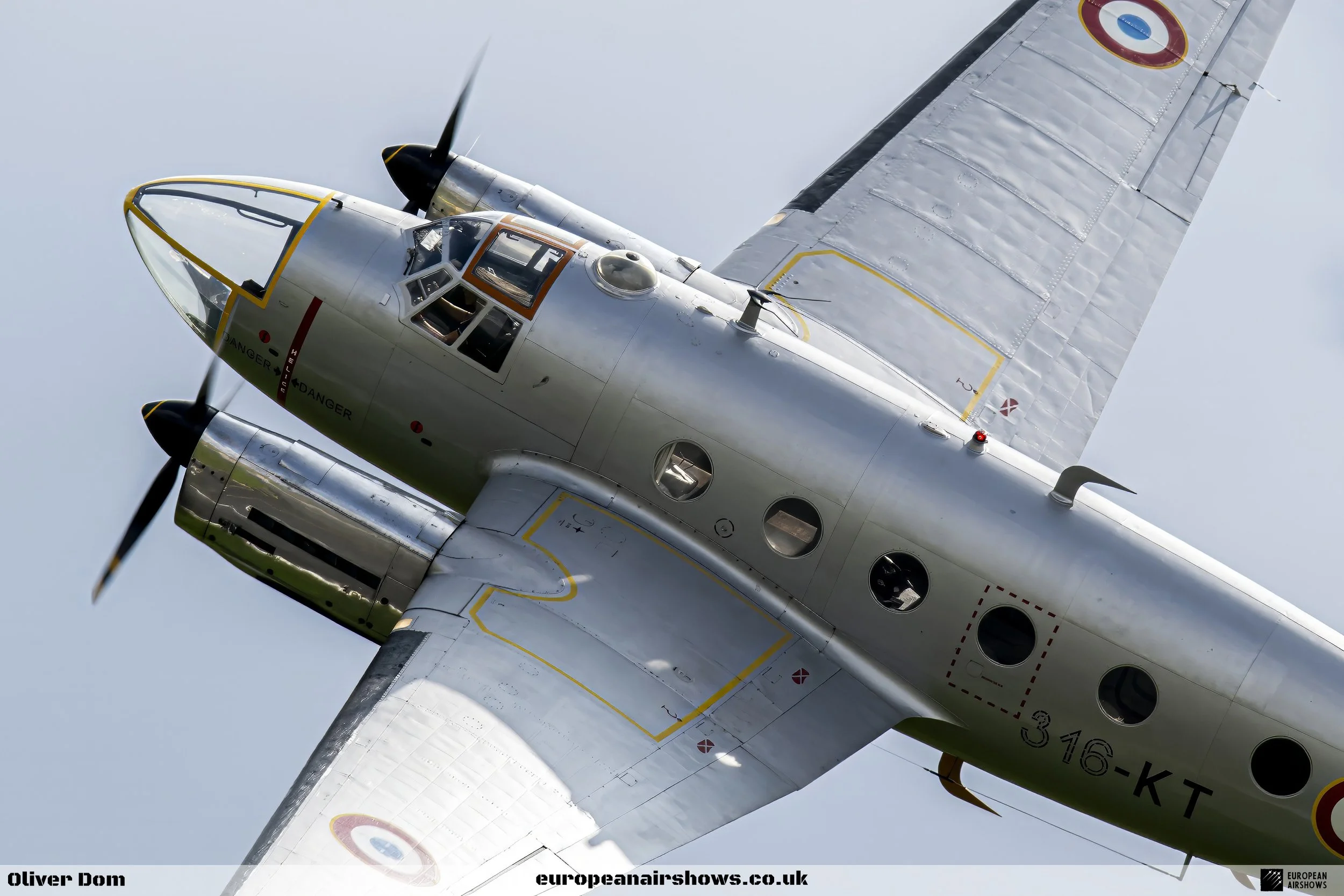
July 6 / Dassault MD 315 Flamant first flight
First Flight 6 July 1947
Dassault MD 315 Flamant
Design work on a twin-engined light transport started in 1946 with the MD 303, a development of an earlier project for an eight-seat communications aircraft, the Marcel Bloch MB-30. The prototype MD 303 first flew on 26 February 1947 powered by two Béarn 6D engines, designed to meet a French Air Force requirement for a colonial communications aircraft. A re-engined version was ordered into production at the new Dassault factory at Bordeaux-Mérignac. The production aircraft was a low-wing monoplane with twin tail surfaces and a tricycle undercarriage, powered by two Renault 12S piston engines.
Three main versions of the aircraft now named Flamant (Flamingo in French) were produced. The MD 315 ten-seat colonial communication aircraft (first flown on 6 July 1947), the MD 312 six-seat transport aircraft (first flown on 27 April 1950), and the MD 311 navigation trainer (first flown on 23 March 1948). The MD 311 had a distinctive glazed nose for its role as both a bombing and navigation trainer.
The first Flamant was delivered to the French Air Force in 1949 and deliveries of all versions were completed by 1953
The aircraft was used for pilot training, navigation training, light transport, maritime surveillance and light ground attack. During the Algerian War of Independence, the plane was used for light attacks with the Nord SS.11 and AS.11 antitank missiles or with machine guns, bombs, and rockets. The Flamant MD 311s (which were based in Algeria to train pilots and navigators at first) were the first aircraft in history to fire one of the world's first wire-guided antitank missiles in anger, using French Army SS.11 antitank missiles, in a combat experiment to get at fortified caves located in deep mountain gorges, in 1956 from an aircraft based with the special unit of the French Air Force in Algeria, GOM.86. The SS.11 attacks proved extremely successful and the French Army which had provided the missiles, began an experiment which resulted in the world's first attack helicopters firing antitank missiles. The Flamant stayed in service until 1981. In addition to the French air force, the Flamant served in Cambodia, Madagascar, Tunisia, and Vietnam.
MD 315 Flamant Facts
Post-War Development: The Dassault MD 315 Flamant was developed in the aftermath of World War II. It was designed to meet the French Air Force’s need for a modern light transport and utility aircraft to replace aging wartime models.
Multiple Roles: The Flamant was a versatile aircraft used for a variety of roles, including transport, training, liaison, medical evacuation, and light bombing. Its adaptability made it a valuable asset for the French military.
First Flight: The MD 315 Flamant made its maiden flight on February 6, 1947. The aircraft demonstrated good handling characteristics and performance during its initial tests, leading to its adoption by the French Air Force.
Variants: There were three main variants of the Flamant: the MD 315 (transport and liaison), the MD 312 (navigation and bombing training), and the MD 311 (bombing and gunnery training). Each variant was tailored to specific operational needs.
Design Features: The Flamant featured a low-wing monoplane design with a conventional tail and retractable tricycle landing gear. It was powered by two piston engines, typically the Renault 12S or the Pratt & Whitney R-985 Wasp Junior.
Crew and Capacity: The standard crew for the MD 315 variant consisted of two pilots. The aircraft could accommodate up to six passengers or a similar number of stretchers for medical evacuation missions.
Operational History: The Flamant saw extensive service with the French Air Force from the late 1940s through the 1960s. It was used in various theaters, including the French colonies in Africa and Indochina, demonstrating its reliability in diverse environments.
Civilian Use: After their military service, some Flamants were sold to civilian operators. They were used for tasks such as aerial survey, cargo transport, and passenger services, extending the aircraft’s operational life.
Training Aircraft: The MD 312 and MD 311 variants played a crucial role in training French Air Force personnel. They were used to train navigators, bombardiers, and gunners, providing hands-on experience in a realistic training environment.
Legacy: Although the Flamant was eventually retired from active military service, it left a lasting legacy as a reliable and versatile aircraft. Several examples are preserved in museums and by private collectors, serving as a testament to its historical significance.












